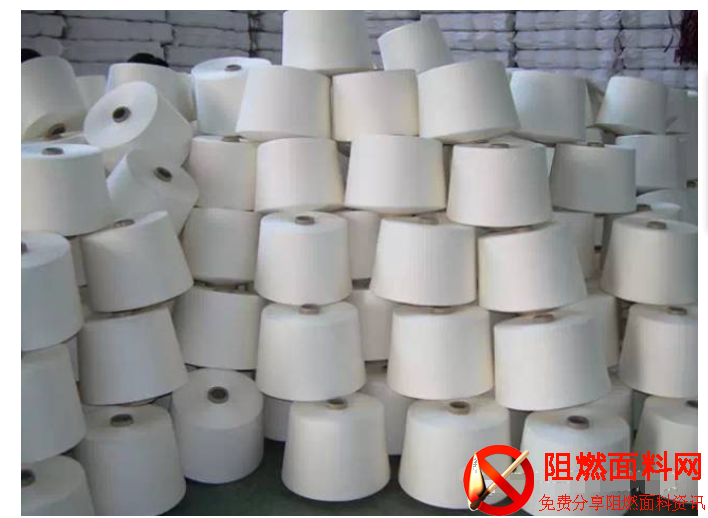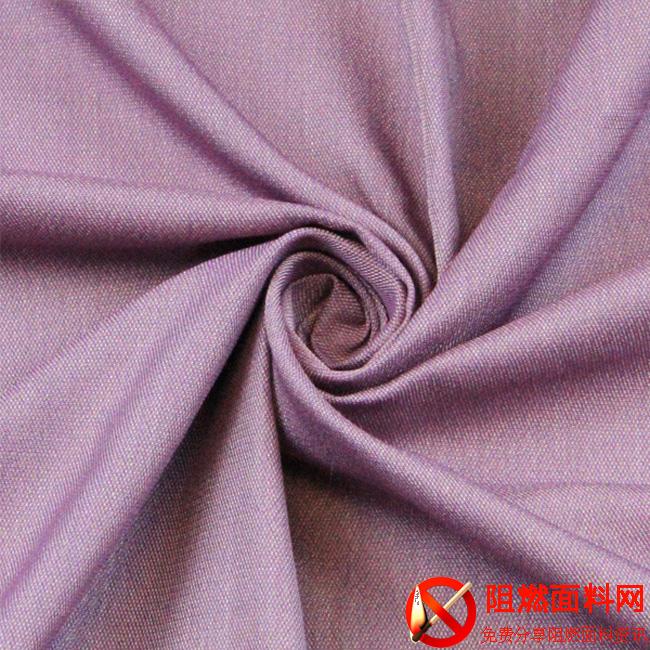Classification characteristics and applications of cotton yarn varieties
Cotton yarn varieties Classification characteristics and applications
Review the characteristics and applications of cotton yarn varieties. The properties, characteristics and applications of yarns are discussed in terms of spinning methods, new ring spinning technologies, yarn linear density and twist design, yarn color, fabric structure, dyeing and finishing processing, yarn uses, spinning raw materials, etc. and put forward development suggestions. It is believed that under the new situation, comprehensive and scientific analysis and understanding of the classification attributes and characteristics of cotton spinning yarns are of very practical and important significance for promoting the development of new spinning technologies, new equipment, cotton spinning fibers and yarns.

Key words
Cotton yarn classification; spinning varieties; product characteristics; yarn uses; energy consumption
1 Overview
The variety and category of yarn directly affect its subsequent processing and the production, quality and use of its derivative products. Yarn is the element and basis for forming fabrics. By optimizing yarn varieties, textiles that meet the needs of users and the market can be produced. In the early days of the founding of the People’s Republic of China, my country’s yarn varieties were single, and pure cotton products dominated the world. With the continuous development of chemical fibers and the continuous innovation of spinning process equipment, cotton yarn varieties and applications have developed rapidly. However, current textbooks, reference books, etc. have few discussions on the current varieties of cotton spinning yarns, and the classification is relatively simple, which cannot meet the readers’ reference needs. We should study and classify the varieties and applications of cotton spinning yarns from the perspective of development and innovation, so as to cultivate and develop new varieties and form new yarns and brand products with my country’s original intellectual property rights and high added value, so that our country will gradually become Textile powerhouse.
2 Classification of cotton yarn products

2.1 Classification by yarn density
Cotton yarn can be divided according to its linear density (unit: tex, i.e. g/1 000 m): thick special yarn (above 32 tex), medium special yarn (21 tex ~ 31 tex), fine special yarn ( 11 tex~20 tex), ultra-fine special yarn (5tex~10 tex), ultra-fine special yarn (below 4 tex). Ultra-fine special yarn is a high-end product that has appeared in recent years, and its application is gradually expanding. It is a symbol of the level of spinning technology.
2.2 Classification according to conventional cotton spinning processes
Generally divided into two categories: carding (carding) technology and combing technology. Combed yarn has uniform dryness, high strength and few defects. It can spin extra-fine special yarns, ultra-fine special yarns and medium and fine special yarns with high quality requirements.
2.3 Classification by spinning method
The yarn characteristics, applicable products and characteristics of the main spinning methods are shown in Table 1.
It can be seen that compared with ring spinning, the new spinning method has the advantages of high output speed, short process flow, spun yarn splicing, and automatic doffing. However, the yarn strength is low, the yarn density is high, and the product uses are not as wide as ring spinning.
2.4 Classification by new ring spinning technology
According to the new ring spinning technology classification, the yarn characteristics, applicable products and characteristics are shown in Table 2.
2.5 Classification by spun yarn twist
2.5.1 Classification according to twist direction of spun yarns
The twist direction of spun yarn twisting can be divided into two categories: forehand twisting (S twist) and backhand twisting (Z twisting). Generally, Z twist is used. In order to reduce the breakage of the high-speed sewing thread, the fine yarn is S-twisted and the stranded thread is Z-twisted. Embroidery thread should also be twisted using SZ. In order to increase the tightness and smoothness of fabrics such as voile, SS twist or ZZ twist is often used. The different twist directions of the warp and weft yarns of the fabric lead to different light reflections, resulting in the effect of hidden stripes or hidden grids.
2.5.2 Classification according to the strength of twisting
The twist coefficient of pure cotton yarn is generally configured in the range of 300 to 360. Yarns lower than 300 can be called low-twist yarns, and yarns greater than 360 can be called high-twist yarns. Among them, the twist coefficient is significantly higher than the upper limit of the general configuration, which is called strongly twisted yarn. Strongly twisted yarn has a large torsional torque and is prone to wrinkling and shrinkage, forming knots and weft bias. It must be heat-set to stabilize the twist. Generally, the twist coefficient of knitted yarn is lower than that of woven yarn, the twist coefficient of chemical fiber pure spinning and blended yarn is also lower than that of pure cotton yarn, and the warp yarn is larger than the weft yarn. Low-twist yarn should be used for pile yarns and towels. Voile fabric requires strong twisted yarn. Crepe fabrics require extremely strong twisted yarns that exceed critical twist levels.
2.6 Classification according to yarn color
Cotton spinning mills can be divided into two categories: natural yarn and colored yarn according to the color of the finished yarn. Colored yarn can be divided into single color yarn, mixed color yarn, AB color yarn (two-color yarn), hemp gray yarn (black and white yarn) and other varieties. At present, chemical fiber dope dyeing technology has achieved a breakthrough. There are three types of pure cotton colored yarn: raw cotton dyeing, cotton mesh dyeing, and sliver dyeing. Among them, cotton web dyeing usually uses raw cotton that has been cleaned and carded, dyed with a carding machine cotton web, or first made into a combed cotton web according to conventional processes, and then cut and stretched into a cotton web before dyeing. Compared with direct dyeing of raw cotton, cotton mesh dyeing has increased neps, increased short lint, and reduced strength after dyeing. In the color spinning process, it is generally advisable to use a small amount of weighed mixed cotton to prevent uneven color mixing during testing and the aggregation and unevenness of blocks and strips of the same color. The dyeing of combed cotton mesh is suitable for spinning high-end colored yarn products. Although the cost of color spinning is high, it can eliminate the need for dyeing yarn and fabric dyeing processes andPerformance, high modulus, excellent high temperature resistance, flame retardant, explosion-proof, corrosion resistance and other special properties. Its main characteristics and applications are shown in Table 3.
3 Suggestions for the development of cotton yarn
(1) Unswervingly innovate and improve product quality. At present, there is still a big gap between my country’s yarn and foreign advanced levels. The high-end products are small in quantity and poor in quality, and there is a lack of products with independent intellectual property rights and famous brand products. Many of them still rely on imports and have yet to be developed, such as smart fiber yarns, high-performance fiber yarns and yarns, and nano-fiber yarns with special properties. Line etc. Therefore, adhering to technological innovation, improving product grades and quality levels, and continuously expanding application areas are the only way to build a strong textile country. With the innovation of spinning technology and the development and application of new fibers, my country’s fibers and yarns have broken through the limitations of traditional clothing materials and have entered many high-tech fields such as aerospace, aviation, and national defense, which require the intersection of multidisciplinary knowledge. Integrated use. Therefore, under the new situation, a comprehensive and scientific analysis and understanding of the classification attributes and characteristics of cotton spinning yarns are of very practical and important significance for promoting the development of new spinning technologies, new equipment, cotton spinning fibers and yarns.
(2) Pay attention to new product development. Enterprises should pay attention to the development of new products, establish a normal mechanism, and establish a product data room and information database. Qualified enterprises should set up new product workshops or one-stop production sections, and pay attention to product intelligence work.
(3) Establish a corresponding production chain for compact or loose products from textile dyeing to application, coordinate new product development and key research work, promote the corresponding use of gauze, and advocate “making the best use of materials and making the best use of goods” to avoid underuse of good yarns. a waste of resource.
(4) Advocate the production of environmentally friendly and ecological green fiber yarns. Fiber yarns that have harmful gas emissions, high energy consumption, and cannot be naturally degraded during the production process should be controlled or even stopped. Support the production of green fibers such as ecological cotton, dyed yarn, chitin fiber, lyocell fiber, and vinylon.
(5) Strengthen the recycling of waste textiles (including yarn). At present, the recycling of polyester and other fibers has achieved certain results, but many synthetic fibers pollute the environment seriously. Polypropylene packaging bags are currently popular across the country, causing land pollution and will be left behind for thousands of years. This is a serious problem for sustainable development, and we hope it will be taken seriously. Many countries have banned polypropylene packaging bags.
(6) Product development should listen to market feedback and user opinions, and also collect foreign information for our own use, exploit strengths and avoid weaknesses, and develop new products, such as the development of colored or dyeable, moisture-wicking and comfortable siro-spun polyester yarn, and the development of high-end wool-like wool suits, improve the added value of products, etc.






